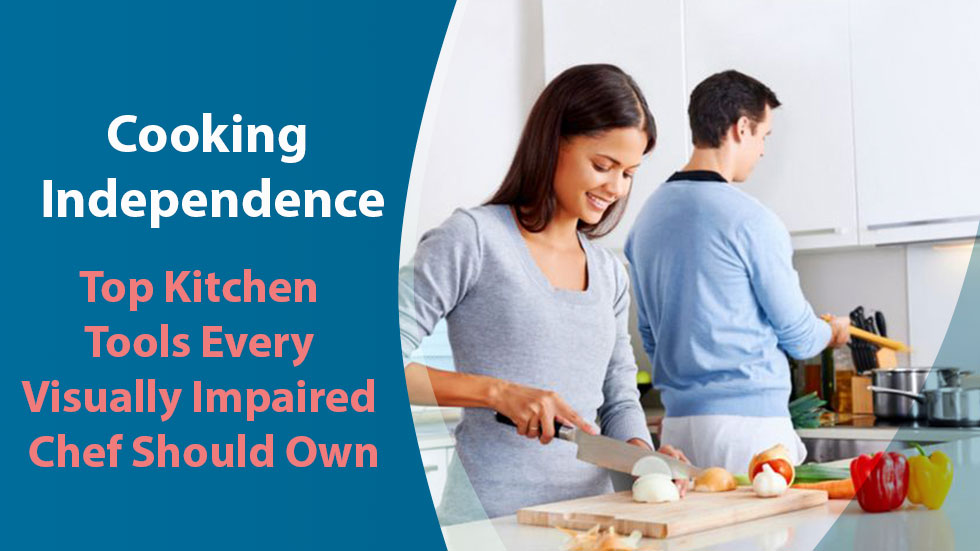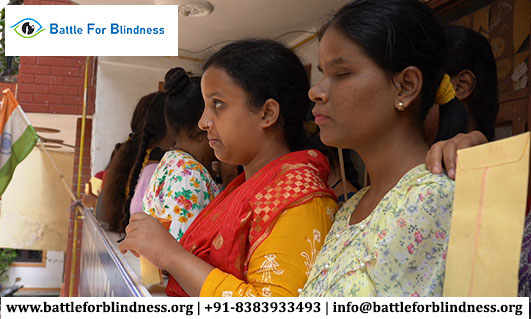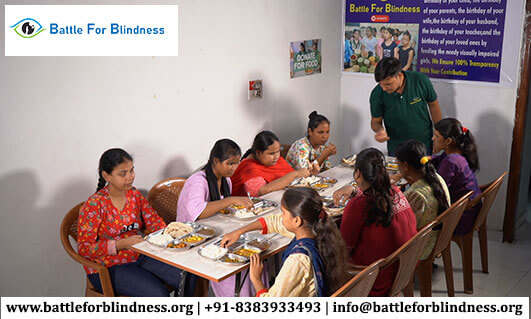
Cooking can be an empowering and rewarding experience, but for visually impaired individuals, navigating the kitchen presents unique challenges. However, with the right adaptive tools and techniques, it’s possible to gain confidence and cook with independence. This blog explores some of the best kitchen aids for visually impaired cooks and offers tips on how to make the culinary experience enjoyable and accessible.
1. Measuring Made Easy
One of the most crucial tasks in cooking is measuring ingredients accurately. Adaptive measuring tools help visually impaired individuals tackle this task with precision:
- Liquid Level Indicators: This device alerts the cook when the liquid in a cup or pot reaches the desired level. It typically uses vibrations or sounds to notify when the container is full.
- Tactile Measuring Cups and Spoons: These have raised or embossed measurement markings, allowing users to identify measurements through touch.
- Talking Scales: These scales announce the weight of ingredients, making it easy to measure without relying on vision.
2. Safe and Simple Cutting
Cutting and chopping can feel daunting without the ability to see, but several tools are designed to enhance safety and efficiency:
- Finger Guards: These shields protect fingers while chopping, offering a layer of safety when working with knives.
- Chopping Mats with Raised Edges: These mats prevent ingredients from slipping off while cutting, keeping everything contained and easier to handle.
- Food Choppers: Manual or electric food choppers allow cooks to quickly dice vegetables and fruits without the risk of injury from knives.
3. Stovetop Safety and Control
Handling heat and hot surfaces safely is essential. Adaptive tools can simplify the process and reduce the risk of burns:
- Bump Dots: These tactile markers can be placed on appliance dials, helping cooks identify the correct temperature settings by touch.
- Talking Thermometers: These thermometers speak the temperature of food, ensuring that meats are cooked thoroughly and food is at a safe temperature.
- Induction Cooktops: Induction stoves only heat pots and pans, leaving the surface itself cool to the touch, reducing the risk of burns.
4. Adaptive Utensils for Easier Handling
Several cooking utensils are specially designed to offer better grip and control for visually impaired cooks:
- Double-Sided Spatulas: These spatulas can flip food from either side, providing more control when turning food over.
- Angled Measuring Spoons: These allow users to measure ingredients without having to tilt or level spoons.
- Talking Microwaves: For reheating or cooking, talking microwaves announce cooking times and settings, making it easier to operate.
5. Organizing the Kitchen
An organized kitchen is a key element in building cooking confidence. Implementing labeling systems and arranging tools systematically can transform the experience:
- Braille or Large Print Labels: Place these on containers, spices, or jars to quickly identify ingredients.
- Color Contrast Cutting Boards: High-contrast cutting boards (like black against white) help those with low vision distinguish food from the background.
- Drawer Organizers and Racks: Keeping utensils, pans, and ingredients in specific, accessible places makes them easier to find and use.
6. Accessible Cookbooks and Recipes
Adaptive cookbooks and technology make it easier to follow recipes and explore new dishes:
- Audio Cookbooks and Recipe Apps: Many cookbooks are available in audio format, or as apps that read recipes aloud, guiding users through each step.
- Tactile Recipe Cards: Some organizations provide tactile recipe cards with raised text, making it possible to read through recipes without needing vision.
7. Building Confidence with Practice
For visually impaired cooks, confidence in the kitchen grows through practice and familiarity. Start small with simple, one-pot meals or easy snacks. With time, expanding to more complex recipes will feel less intimidating. Cooking is a skill, and just like any skill, the more you practice, the more adept you’ll become.
Conclusion:
Adaptive tools can open up a world of independence and creativity in the kitchen for visually impaired individuals. With a few adjustments and a well-equipped kitchen, cooking can become a joyful and confidence-boosting experience. Whether preparing meals for oneself or loved ones, the process is empowering, and the results are delicious.
Remember, there is no one-size-fits-all solution. Experiment with different tools and techniques to find what works best for your needs. Soon, the kitchen will become a space of freedom and culinary exploration.





